A Complete Guide To Paid Media [2022]
There are various benefits you can enjoy via marketing. For instance, it helps individuals and brands to capture a wider audience, increases exposure, and most importantly, helps to build goodwill. Likewise, there are many sorts of marketing, among which paid media marketing is a name not to be left behind.
The term refers to an internal marketing effort that conducts a marketing campaign with tailored strategies and asks for a general fee. However, we know that you haven’t understood completely about it via the above-mentioned 2-lined definition. If yes, keep on reading, as this article will let you understand the true essence of paid media. You will also introduce yourself to all the essential and must-to-be-known information. So, make sure you don’t miss any piece of information. Let’s start
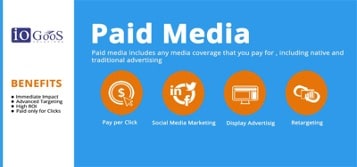
Table of Contents
All You Need To Know About Paid Media
The forthcoming content will categorically discuss the paid media to assure a better understanding of all our readers.
What Is Paid Media?
Many types of media exist in today’s world, including Earned or organic media, owned media, and the list goes on.
Owned media can be referred to as blog websites or any other sort of web entity that is under your complete control. That means it is anything under an organization’s complete and direct control. Yet, earned, or organic media is any content that travels across the web based on its fame ad inherent value, including reviews, social media comments, etc.
On the other hand, paid media is entirely different from all media mentioned above types. It is a bit closer to traditional marketing, where an individual needs to pay money to any third party that agrees to broadcast your messages to other people. Hence, it includes all those external marketing efforts involving paid placements such as branded content, PPC- Pay Per Click, and display advertisements. This form of media is one significant aspect of revenue growth and brand awareness for any digital or e-commerce business.
Some prominent examples of paid media are Google Ads and Social media Ads. But wait, you don’t know what these ads are? Well! Suppose you use any social media platform such as Facebook- Meta, Twitter, Instagram, G plus, or even YouTube. In that case, you must have noticed that a product advertisement suddenly pops up between videos (the advertisement we all hate). If yes, congratulations, you are watching nothing else but a prominent example of paid media. The product manufacturing firms pay these social media sites to display their advertisement on your computer/ mobile screens. Hence, your favorite social media sites are that third-party in this case.
Paid Media VS Other Types Of Media
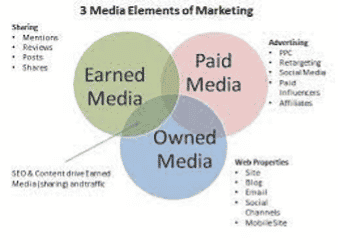
Numerous branches of media exist in this world. Yet, there are only 2 main types: Paid and Unpaid. So, what is the difference between both?
Their names solely represent the main difference between paid and unpaid media. Paid media is when an individual or business entity pays a third party to generate leads. However, unpaid media refers to all media racecourses and actions that do not demand money from users.
Nonetheless, a paid considered an undisputed pack leader, new media, and channels such as the mobile application and social media. Here are the highlights of some other types of media VS Paid media
Earned Media VS Paid Media
Earned media is that media type that utilizes messaging services for generating leads and enhancing the exposure of your business. Some significant examples of earned media are press & media, customer reviews, testimonials, and unpaid influencers shutouts on any platform.
- One of the significant differences between earned and paid media is that earned media offers limited input and leverage on messaging velocity, while paid media grants the business complete control.
- Earned media helps generate proof and social currency. Yet, it does not translate into leads. Conversely, paid media is one efficient way of generating leads for the duration of the campaign run.
- Earned media has both positive and negative sides when discussing its effects on business. Whereas paid media allows business owners o to control the narrative.
Owned Media VS Paid Media
Owned media contains any media owned by the business, such as websites, catalogs, emails, newsletters, mobile apps, and communities. Hence, we can refer to it as a form of media solely owned by the business, whether purchased or created. Following are some points that distinguish owned media from paid media.
- Paid media is helpful for a business to generate leads and awareness. However, t does rely on owned media to close the sale via landing pages and other mechanisms that capture leads.
- Owned media helps in the creation of sustainable marketing effects. However, marketing effects created by paid media are transitional, immediate, and transient.
- Owned media can be used for organic lead generation if combined with Search Engine Optimization- SEO and Content marketing. On the other side, paid media needs to be renewed after each advertising or marketing campaign ends to sustain the lead generation.
Shared Media VS Paid Media
Shared media can be any content generated by customers, users, or a community shared by a business and is part of any social media marketing campaign. The content may include text, video, gifs, and images.
Shared media is comparatively a new form that has emerged in the wake of social media platforms such as Twitter, LinkedIn, and Facebook. Following are some differences between shared media and paid media.
- Shared media provides cheaper marketing with a significant cost and more social currency than paid media.
- It needs community-budding efforts to start, which may seem costly and provide very little return on investment. Yet, Paid media starts generating immediate leads that help businesses ensure a higher rate of ROI in comparatively less period.
Why Go For Paid Media?
Now that you know enough about what paid media is, the next question that might pop up in your mind is, “Why must an individual invest in such things? And what benefits can it drive to me? Stay tuned to find answers.
At first glance, paid media may seem nothing but a vague idea to many people. However, they didn’t realize the strength of social media and paid media over web marketing. It happens because most firms and brands consider web marketing one important tool that lets the users avoid some typical pitfalls of paid advertising campaigns by exposing various users to your brands through interesting and unique strategies. While this is true, the importance of paid media can not be ignored as it still has a valid usage and can work very well in tandem with owned and earned media to help an e-commerce site grow immensely.
Benefits Of Paid Media
In addition, paid media is one of the most efficient and effective ways of bringing vast traffic to your website. How? Well! It is pretty good for opening doors; otherwise, it stays closed. For some internet surfers, a post or tweet related to any promotion is their first interaction and exposure to the business or brand. So, whether you are up for a new venture or obtain a very well-established business, you would not want to miss this great opportunity of spreading your brand as widely as possible. Remember, the more brand awareness you create, the higher your business scale.
Moreover, the results of paid content are always easier to track in comparison to organic content. It happens because social media usually grants statistics based on impressions, clicks, and leads your ad has received during its running time. Hence, paid promotions can help your brand ensure high clicks and traffic. So, whether the promotion is for any upcoming huge sale, an update, even for charity reasons, or an informative video aiming to establish goodwill, make sure to pick the right influencers and choose the right platform.
Types Of Paid Media
There is a very wide variety of paid media available in the market. And you need to acquire information about various types to choose the option that best suits you. Here are some prominent types of social media.
Search Engine Advertisement
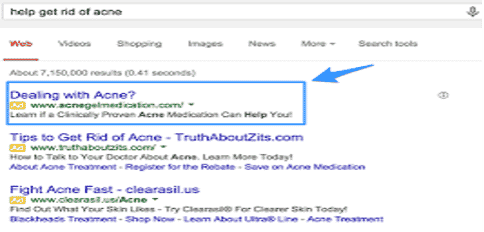
The search engine ads work on the payment model of PPC (Pay per click) and PPI (Pay Per Impression). PPC ads appear on the site of the media owner. However, the advertiser only must pay when a random individual clicks on the link.
The ads are usually displayed on top of the search result page with an ‘Ad’ sign to let the searcher know they are viewing an ad instead of their search result. Also, these sorts of advertisements are displayed on websites and blogs.
However, it is very important- in fact, crucial for one to spend time searching for low competition yet relevant keywords and ensure that the bid amount is reasonable enough not negatively to affect your ROI- Return On Investment.
Hence if all the rules are carefully followed and all strategies are correctly implemented, the PPC can promise guaranteed results.
On the other hand, comes PPI ads. The PPI ads are charged every time your advertisement gets displayed on any site. In this case, the interaction and clicks don’t matter. Instead, the PPI ads usually work on the Cost Per Mille/ Thousand- CPM payment model. That means you must pay for every 1000 impressions you get on your advertisement.
PPI is said to be more cost-effective and cost-efficient as the charges don’t increase with every click. Instead, you only must pay the pre-determined sum when your ad completes its 1000 impressions. That means more traffic at less price. what else do we want?
Native Ads
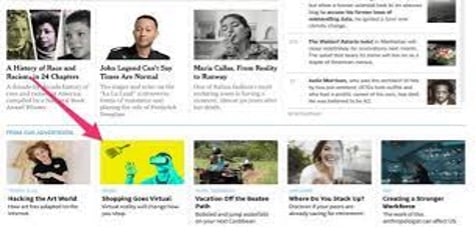
Native ads are concerned with visual or text ads that match the typeface, design, and look of the web entity they are on. These advertisements are displayed on search listings, in promoted stories, in-feed, and so on.
You sometimes can find native ads being displayed at the very end of the page, especially if you are reading an article on a blog. It includes articles, blog posts, advertorials, co-branded video content, and sponsored product placements.
Influencers Marketing
Influencers marketing is relatively a new term in the world of digital paid media that nested unpaid promotions in the past. However, in today’s world, influencer marketing has become a distinct yet significant type of paid media that leverages substantial follower networks of individuals known as influencers to promote branded messages.
As influencer marketing involves various social media influencers, it is one efficient and effective way of spreading word of mouth. It helps to build goodwill and enables the business to expand its audience.
Let’s understand the case with the help of examples. Suppose you are a fan of some random TikToker. And one day, your favorite TikTok- one of the social media influencers- shares his or her skincare routine with you and specifically endorses a moisturizer by telling its main ingredients and benefits. Now it is pretty evident that you would also want to add that specific moisturizer to your skincare routine, as you want to look like your favorite star. And that’s what is called influencer marketing.
Paid Social Media
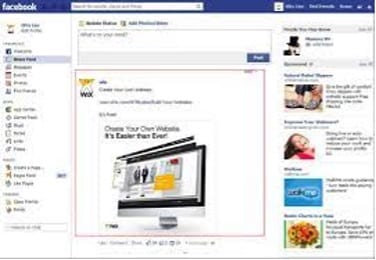
This paid content is the most famous on the whole list. The main secret of fame lies within the massive audience that all these social media sites obtain. For instance, Facebook holds over 2.96 billion active users, Instagram has more than 1.21 billion users, and YouTube has over 2.6 billion active users from across the globe.
Every other person in today’s world is a part of social media. And social media platforms allow brands and individuals to place their ads in videos and pictures to bring laymen to their sites.
Not just this, but social media sites also help brands to find their target audience as they put special attention to the behavioral attitude of the audience. For instance, has it ever happened to you that you were searching for Gucci products on Google, and after some time, your Facebook account started to show you similar products?
It happens because Facebook has collected all your search data from Google and is now using it to find your area of interest and show products accordingly. In this way, you not only get to see marketing advertisements but what you see is marketing advertisements for the specific products that belong to your area of interest.
Banner Ads
Banner ads are also known as display ads and web ads. These are based on visual images displayed on websites for a specific period to generate leads and traffic to the advertisement’s web.
So how do display or banner ads work? Well, you visit a website or blog and notice an advertisement of your interested product displayed on its homepage. For instance, you are thinking about purchasing new earphones and visiting a random website. There, you observe an advertisement on an e-commerce website saying, ” Get Your New Earphones In 50% Off SALE”. Now, this ad will attract you to click on it. And when you do so, the same ad will redirect you to the homepage of that e-commerce store, which is the advertiser.
The banner ads are embedded into the publisher’s website in the form of pictures or GIFs. A smart tip here is to place the advertisement on that website where you think your target audience spends most of the time.
For instance, you own an e-commerce store that sells fish. Now, what sort of website would work best for you? Blogs, of course, are related to sea-food recipes.
OOH AND DOOH Ads
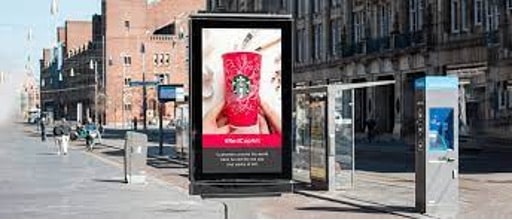
We know the terms mentioned above may look funny to you. However, they are short forms of two long-tail words. The OOH stands for Out Of Home, and DOOH represents Digital Out Of Home.
Both paid media types help to reach the audience while they are not at home but in public places.
The OOH is one traditional advertising strategy that helps to enhance exposure and attract new consumers. At the same time, they are outdoor for any purpose through postures, bus shelters, benches, cinemas, billboards, posters, and the list goes on. This form of paid media does not involve any digital services.
The DOOH, on the other hand, has helped in including the concept of OOH in the digital world with in-store kiosks, digital sign pages, digital brochures and billboards, ads being displayed on computer screens, etc.
That means instead of printing a banner with an advertisement, the advertiser and publishers focus more on the neon board with functional screens that are easier to use and attractive to look at.
The Digital Out Of The Home advertisement is one of the effective ways of re-engaging customers and influencing a conversion.
Some renowned brands are using DOOH to re-target customers and make them remember the product they wished to purchase but never finished with the ordering process.
Payment Models For The Paid Media
As mentioned above, paid media asks budget from the advertiser. There are three payment models for an advertiser to choose from. Here are details of each:
Cost Per Mille (CPM)
Cost per mille (CPM) is a paid content model that focuses on the advertiser. That means the advertiser must pay a sum for every 1000 views.
Cost Per Click (CPC)
Cost per click is a type of paid content where you must pay a specific sum of money whenever a person clicks on the advertisement, irrespective of views and impressions. The model’s metric has both bidding systems: Automatic and Manual, allowing you to set a budget or control the maximum bid sum.
Cost Per Click (CPC) VS Cost Per Mille (CPM)
CPC and CPM are two distinguished types of paid media that may look like many. Hence, it is very important at this point to clear out the confusion. Here are some prominent differences
- The first and foremost difference between both is that CPC solely depends upon leads, conversions, and clicks generated over time. However, CPM is usually concerned about being seen and impressions collected.
- CPC is Bidding focused and performance-based, while the CPM mainly focuses on Impressions and campaign-specific goals.
- The CPM drives you with brand awareness and enhances brand visibility. On the other hand, CPC drives an individual or brand with conversions and direct traffic.
Benefits & Challenges Of Paid Media
Following are some major merits and challenges of paid media
Benefits Of Paid Media
It Is Trackable And Measurable: paid media helps businesses use tracking tools for collecting data regarding ads and promotional links for increasing leads, reach, and engagement.
Multi-purpose: the best thing about paid media is that it is not unfit for any business model. Hence, no matter your work on the B2B or B2C model, you can easily customize this media form for lead generation at any level of the conversion funnel.
Better Targeting: Advertising sites such as the Facebook and Google Ads are great for granular targeting options such as demographics. And if configured appropriately, it can help generate high leads in the least possible period.
Complimentary: Paid media complements many types of media, including owned, shared, and earned, allowing for positive network effects.
Challenges Of Paid Media
Re-targeting: Advertising campaigns that do not use re-marketing and re-targeting strategies might be unsuitable and less effective as 97 percent of the visitors that leave a newly visited website are irreversible. Also, re-targeting advertisements have a 10x click-through rate compared to original display ads.
Data Collection And Analysis: Paid media is a helpful tool for generating data leads. However, this data is not used without accurate data collection tools.
The Bottom Line
In a nutshell, paid media is a significant tool that is helpful for businesses to generate leads. It also helps businesses transform into the fastest growing business and lead generation fortunes. Many types of paid media exist, including native ads, display ads, social media ads, influencer marketing, OOH, DOOH, etc.
In addition, twp payment model types were used for this purpose that are mentioned above.
Details of each type and each model are discussed in the above content, and all other essential information. So, make sure to read very carefully.

![A Complete Guide To Paid Media [2022]](https://nsouly.com/wp-content/uploads/2022/07/A-Complete-Guide-To-Paid-Media.jpg)
